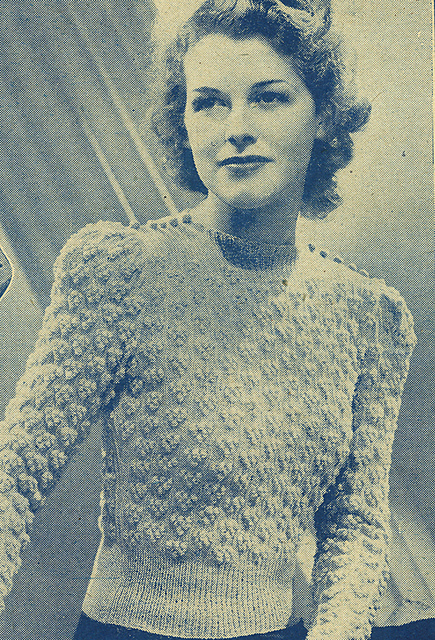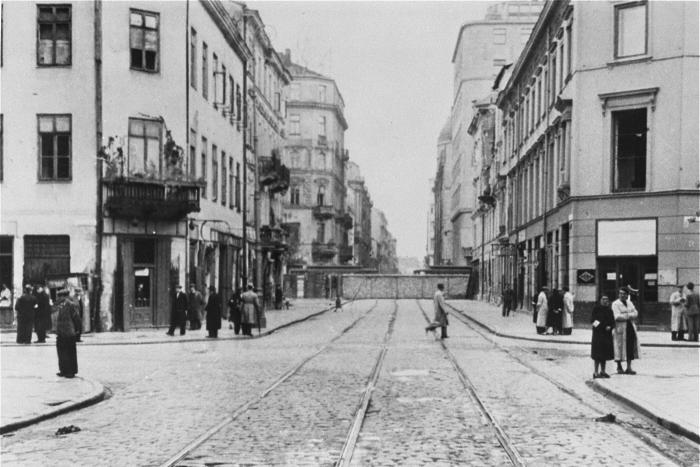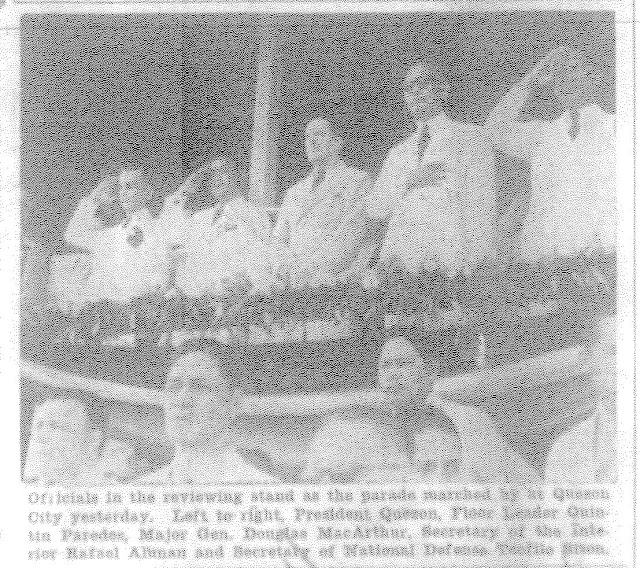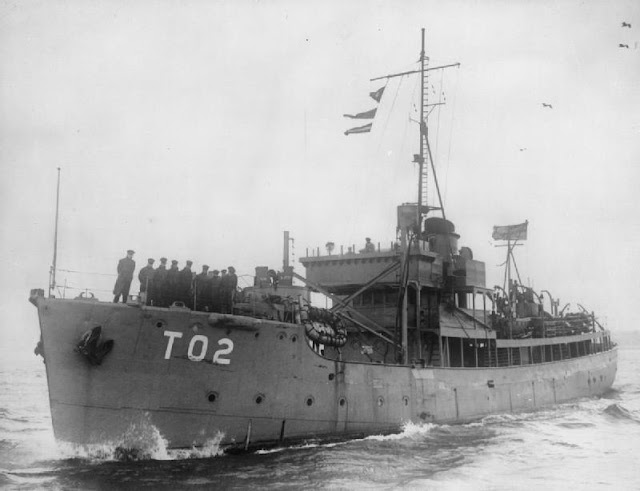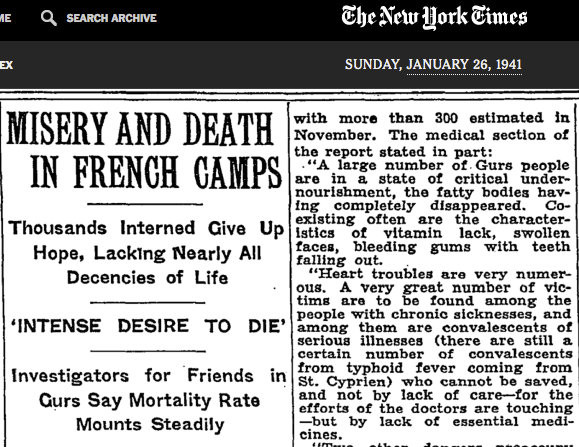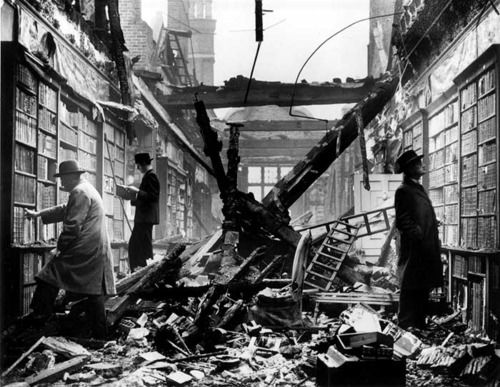Sunday 25 May 1941
 |
| "Parachute troops jump from a Whitley bomber during a demonstration for the King near Windsor, 25 May 1941." © IWM (H 9955) |
Eleven Fiat CR-42 fighters of Italian 155th Squadriglia arrive at Aleppo, Syria en route to Mosul, Iraq.
European Air Operations: RAF Bomber Command sends 30 aircraft on anti-shipping missions. The sink Kriegsmarine minelayer Sperrbrecher-33. After dark, it sends 48 bombers on minelaying operations off Brest and Saint-Nazaire, likely in anticipation of the German battleship Bismarck heading for one of those ports.
The RAF bombs and sinks 1538-ton Danish freighter H.P. Hansen about 6 nautical miles (11 km) northwest of Schiermonnikoog Lighthouse, Friesland, Netherlands. Sources say the Luftwaffe sinks the Hansen, and it may be a case of mistaken identification, but it seems much more likely (to me at least) that the RAF sinks it during its normal anti-shipping missions - draw your own conclusion. Allied ships generally don't operate in that area during 1941.
During its anti-shipping raids today, an RAF plane crashes for unknown reasons (probably anti-aircraft fire) at Den Helder. It crashes into and sinks German the sperrbrecher (functional minesweeper) Silvia. There is some likelihood that the pilot of the falling plane directs it at the Silvia, which would make it a kamikaze strike.
 |
| The captain of Suffolk, Robert Meyric Ellis, remained on the bridge throughout the chase of the German battleship Bismarck. It was he who Lütjens fooled with his brilliant maneuver. © IWM (A 4330). |
 |
| Vice-Admiral (later Admiral) Lütjens aboard the heavy cruiser Admiral Hipper during the Norwegian Campaign in April 1940. Photo courtesy of Dieter Troester. |
The maneuver works brilliantly. Bismark breaks the radar contact of shadowing cruiser HMS Suffolk, opening a gap that is beyond the British cruiser's radar range. Lütjens then has the ship circle around to the north, then break back to a heading to the east - toward France. The captain of the pursuing British ship assumes Bismarck has headed west on its raiding mission and heads that way - completely losing contact. Basically, Bismarck winds up behind the British cruisers who still think the German ship is ahead of them.
 |
| "The 8" guns of HMS SUFFOLK firing." This is during the chase of Bismarck in May 1941. © IWM (A 4312). |
Then, having executed a masterstroke, Admiral Lütjens makes a massive blunder. He sends a long message to Naval Group West headquarters in Paris describing his situation and plans. The British use direction-finding equipment to pinpoint the ship's location, but make their own error and mistakenly conclude that Bismarck is heading back the way it came to Germany. Thus, the mass of Royal Navy ships heads off in that direction, opening up a path for Bismarck to slip through to a French port. Bismarck spends the 25th heading toward safety without being spotted. It now looks good for the Germans, they only have to stay hidden throughout the 26th to make it to France. That sounds easy... but the entire Royal Navy is looking for Bismarck.
U-103 (KrvKpt. Viktor Schütze), on its fourth patrol out of Lorient, is operating off Monrovia and is having great success. Schütze sinks two ships:
- 3575-ton Egyptian freighter Radames
- 7789-ton Dutch freighter Wangi Wangi (one dead)
The RAF bombs and sinks 1049-ton German freighter Silvia near Den Helder.
Brazilian cargo ship Atalaia sinks in the South Atlantic of unknown causes. All 66 crew aboard perish.
Portuguese schooner Silvina catches fire and sinks off the Grand Banks. Everyone survives.
U-69 (Kptlt. Jost Metzler), on its third patrol out of Lorient, lays seven mines within Lagos Harbour.
The Italian Navy forms a screen west of Gibraltar composed of submarines Argo, Brin, Emo, Marconi, Mocenigo, Velella, and Venero.
Convoy OG-63 departs Liverpool bound for Gibraltar, Convoy HG 63 departs from Gibraltar bound for Liverpool.
The Kriegsmarine orders a dozen new U-boats with consecutive numbers from U-983 to U-994.
U-653 is commissioned.
 |
| The British Mk VI tank (Lieutenant Farran) destroyed during the counter-attack on Galatas, Crete, 25 May 1941. |
In an indication of growing German confidence in the battle, Lieutenant General Kurt Student flies into Maleme to direct operations.
The 1st Greek Regiment fights hard at Kastelli on the outskirts of Heraklion. German attempts at seaborne reinforcement come to naught, as a half-hearted attempt to tow a lighter containing two Panzer IIs has to put into port at Kithira when Royal Navy ships are spotted. The Royal Navy brought a small force of commandos into Suda Bay as reinforcements on the 24th, but the vast majority are unable to land today due to poor weather. Basically, the German advance is stalled, but the British are unable to bring enough force to bear to dislodge them.
The Germans are expanding their holdings throughout Crete. Today motorcycle and anti-tank troops of the 5th Gebirgsdivision occupy Kandanos. They face unexpected resistance there from the locals, and the German troops are infuriated by an ambush laid by them at Kandanos' gorge and vow to get revenge.
The Luftwaffe keeps up the pressure on British shipping at Crete. During attacks on Heraklion, German planes sink 846 ton Greek freighter Leros.
The Royal Navy largely has abandoned the waters north of Crete due to Luftwaffe pressure, at least during the daytime. It does send a sweep north of the island during the night led by light cruisers Ajax and Dido.
A large Royal Navy formation led by battleships HMS Barham and Queen Elizabeth and aircraft carrier Formidable leaves Alexandria at noon. This is Operation MAQ3. The destination is Scarpanto Island, where a Junkers Ju 87 Stuka base is located. The plan is to launch strikes against the Luftwaffe airfield during the night to reduce German airpower in the eastern Mediterranean. The Formidable, however, has many planes that are beset with mechanical problems, but something must be done immediately about the Luftwaffe's supremacy in the area.
The Italian convoy attacked by HMS Upholder (Lieutenant-Commander Malcolm David Wanklyn), losing 18,500-ton troop transport Conte Rosso on the 24th (some sources say early on the 25th) returns to Naples despite its heavy escort.
Vichy French sloop-of-war runs aground off Corsia and is wrecked.
On Malta, the RAF sends a handful of Swordfish to drop "cucumber" magnetic mines off Lampedusa, which the Axis is using during its convoys to Tripoli. Due to anti-aircraft fire, the mission fails and the Swordfish return with their mines.
Whitehall decides to replace Malta Air Officer Commanding, Air Vice Marshal Forster Maynard, AFC. His replacement at the end of May will be Air Vice Marshal Hugh Pugh Lloyd MV DFC.
 |
| HMAS Voyager at Suda Bay, May 1941. |
US/German Relations: Wrapping up on the incident that occurred on 19 January 1941, the US State Department informs the German Charge d'Affaires in Washington that a sailor is serving "an appropriate sentence" for ripping down a German flag over the German consulate in San Francisco. In fact, two sailors had ripped down the flag, and a municipal court had found them guilty, but their sentences had been stayed pending court-martials. One had received a medical discharge in the interim, while the Navy quietly discharged the other, Harold Sturtevant Jr. Sturtevant, incidentally, reenlists on 15 December 1941 and serves in the US Navy again.
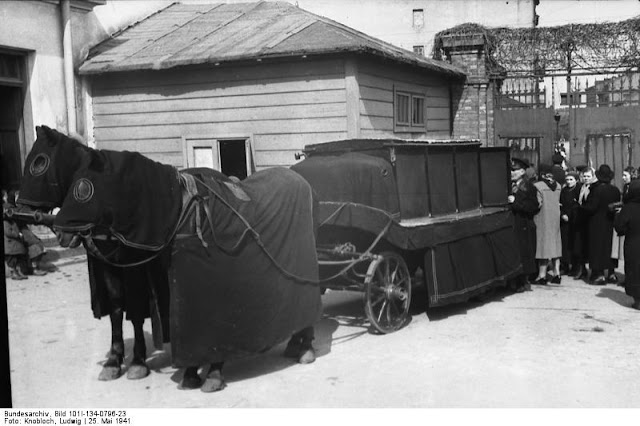 |
| A Jewish funeral procession at the cemetery gate, Warsaw, 25 May 1941 (Knobloch, Federal Archives). |
The Finns have no authority to enter into any agreements, but Lt. General Heinrichs indicates a general approval of the German presentation and eventual military cooperation. He promises to give some official response to the German presentation by 2 June 1941. However, it is unclear exactly what the Finns would be agreeing to, as the Germans continue claiming they are negotiating with the Soviets.
German Military: The Wehrmacht continues moving trains full of troops to Poland in preparation for Operation Barbarossa. There are 100 troop trains sent every 24 hours, with the OKW operating with absolute priority and on a strict timetable.
British Government: Winston Churchill asks Lord Beaverbrook, who recently (30 April) resigned as Minister of Aircraft Production and currently is Minister of State, to "draw up a proposal" to get a "large infusion of civilian management" into the supply services of the Mediterranean command. The intent is for such supply experts to "take this burden off the Commander-in-Chief." Churchill long has felt the ferrying of aircraft from Takoradi has been poorly managed, and he also feels that Middle East Commander General Archibald Wavell has assorted failings, so taking this "burden" off Wavell neatly serves two purposes.
Vichy French Government: Former Vice Premier Pierre Laval gives an interview to US journalist Ralph Heinzen of UPI at Chateldon Castle, France. Laval states that Hitler had agreed that "after the war" France would play a large role in Europe. Laval views this as a promise by Hitler to "guarantee French independence in post-war Europe."
French Indochina: Japanese soldiers, technically guests of the Vichy French government, raid two warehouses in Haiphong and steal $10 million worth of US goods.
French Homefront: The 1941 Coupe de France Final is held at Stade Municipal, Saint-Ouen. Girondins ASP defeats SC Fives 2–0, with both goals by Santiago Urtizberea.
May 1941
May 1, 1941: British Hold Tobruk
May 2, 1941: Anglo-Iraq War
May 3, 1941: Liverpool Hammered
May 4, 1941: Hitler Victory Speech
May 5, 1941: Patriots Day
May 6, 1941: Stalin In Command
May 7, 1941: May Blitz
May 8, 1941: Pinguin Sunk
May 9, 1941: U-110 Captured
May 10, 1941: Hess Flies Into History
May 11, 1941: The Hess Peace Plan
May 12, 1941: Tiger Arrives Safely
May 13, 1941: Keitel's Illegal Order
May 14, 1941: Holocaust in Paris
May 15, 1941: Operation Brevity
May 16, 1941: Blitz Ends
May 17, 1941: Habbaniya Relieved
May 18, 1941: Croatia Partitioned
May 19, 1941: Bismarck at Sea
May 20, 1941: Invasion of Crete
May 21, 1941: Robin Moore Sinking
May 22, 1941: Royal Navy Destruction Off Crete
May 23, 1941: Crete Must Be Won
May 24, 1941: Bismarck Sinks Hood
May 25, 1941: Lütjens' Brilliant Maneuver
May 26, 1941: Bismarck Stopped
May 27, 1941: Bismarck Sunk
May 28, 1941: Crete Lost
May 29, 1941: Royal Navy Mauled Off Crete
May 30, 1941: Sorge Warns, Stalin Ignores
May 31, 1941: British Take Baghdad
2020
German Military: The Wehrmacht continues moving trains full of troops to Poland in preparation for Operation Barbarossa. There are 100 troop trains sent every 24 hours, with the OKW operating with absolute priority and on a strict timetable.
 |
| Warsaw Ghetto street scene, 25 May 1941. Jews are not yet required to wear Yellow Stars of David patches. |
Vichy French Government: Former Vice Premier Pierre Laval gives an interview to US journalist Ralph Heinzen of UPI at Chateldon Castle, France. Laval states that Hitler had agreed that "after the war" France would play a large role in Europe. Laval views this as a promise by Hitler to "guarantee French independence in post-war Europe."
French Indochina: Japanese soldiers, technically guests of the Vichy French government, raid two warehouses in Haiphong and steal $10 million worth of US goods.
French Homefront: The 1941 Coupe de France Final is held at Stade Municipal, Saint-Ouen. Girondins ASP defeats SC Fives 2–0, with both goals by Santiago Urtizberea.
 |
| Wake Island, taken by a Consolidated PBY patrol plane on 25 May 1941. The view is west along the northern side of Wake and shows the Pan American Airways base. |
May 1941
May 1, 1941: British Hold Tobruk
May 2, 1941: Anglo-Iraq War
May 3, 1941: Liverpool Hammered
May 4, 1941: Hitler Victory Speech
May 5, 1941: Patriots Day
May 6, 1941: Stalin In Command
May 7, 1941: May Blitz
May 8, 1941: Pinguin Sunk
May 9, 1941: U-110 Captured
May 10, 1941: Hess Flies Into History
May 11, 1941: The Hess Peace Plan
May 12, 1941: Tiger Arrives Safely
May 13, 1941: Keitel's Illegal Order
May 14, 1941: Holocaust in Paris
May 15, 1941: Operation Brevity
May 16, 1941: Blitz Ends
May 17, 1941: Habbaniya Relieved
May 18, 1941: Croatia Partitioned
May 19, 1941: Bismarck at Sea
May 20, 1941: Invasion of Crete
May 21, 1941: Robin Moore Sinking
May 22, 1941: Royal Navy Destruction Off Crete
May 23, 1941: Crete Must Be Won
May 24, 1941: Bismarck Sinks Hood
May 25, 1941: Lütjens' Brilliant Maneuver
May 26, 1941: Bismarck Stopped
May 27, 1941: Bismarck Sunk
May 28, 1941: Crete Lost
May 29, 1941: Royal Navy Mauled Off Crete
May 30, 1941: Sorge Warns, Stalin Ignores
May 31, 1941: British Take Baghdad
2020







